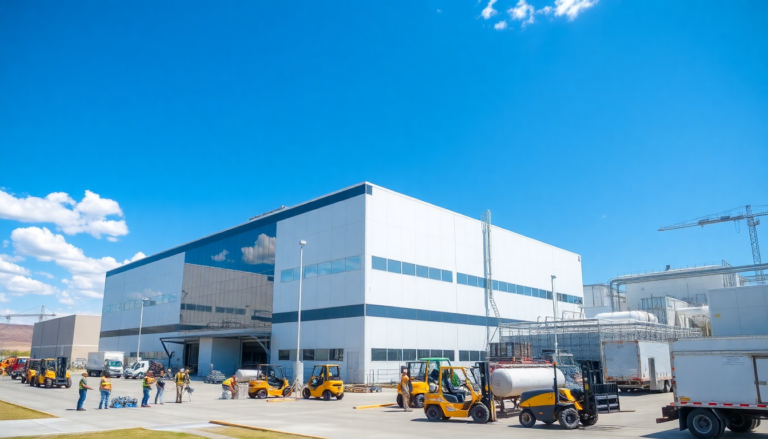Argomenti trattati
Imagine a world where the chips powering our devices are made right here in the U.S.—that dream is inching closer to reality as GlobalWafers embarks on an ambitious expansion plan. With its new manufacturing facility in Sherman, Texas, the company not only aims to strengthen its foothold in the semiconductor market but also to mitigate the risks associated with international tariffs that have caused so many ripples in the tech industry. It’s a fascinating time to watch how these developments unfold, especially with the economic dynamics at play.
GlobalWafers’ strategic move to Texas
Back in 2022, GlobalWafers initiated the groundwork for its new chip manufacturing facility in Sherman, Texas. This decision wasn’t merely a reaction to the political climate but a calculated step to enhance U.S. manufacturing capabilities in the tech sector. Chairwoman Doris Hsu has boldly announced an additional investment of $4 billion to support and expand chip manufacturing in the region. This funding, coupled with an already established plant, puts GlobalWafers on a trajectory that could redefine domestic semiconductor production.
The Sherman facility is set to produce silicon wafers, a fundamental component in the semiconductor manufacturing process. If you’re wondering how significant this is, think about it: nearly every electronic device you use relies on these wafers. With nearly 200 permanent jobs already created and over 1,000 people employed during construction, the impact on local employment is palpable. By 2028, GlobalWafers anticipates adding up to 650 more roles in tech, engineering, and operations. This isn’t just a win for the company; it’s a boon for the local economy and the U.S. tech landscape.
Collaborations and competition in the chip market
The excitement doesn’t end with GlobalWafers; it’s part of a larger trend where several companies are pivoting to expand their U.S. operations. For instance, TSMC, another titan in the semiconductor industry, has also committed to investing heavily in U.S. chip manufacturing, pledging a staggering total of $165 billion since the Biden administration took office. Their recent promise to funnel $100 billion into facilities in Phoenix, Arizona, shows that the U.S. is becoming a hotspot for semiconductor production, transforming the landscape of high-tech manufacturing.
Interestingly, I remember when the tech community was buzzing with skepticism about whether these initiatives would truly materialize. Now, with tangible investments and job creation, the narrative is shifting. The competition is fierce, but collaboration among these industry giants could lead to a revolution in how chips are made and utilized in America.
Implications for the future of U.S. manufacturing
So, what does this all mean for the future? The investments from GlobalWafers and TSMC signal a growing trend towards reducing reliance on Asian manufacturing plants, which have long dominated the semiconductor landscape. This shift not only promises more jobs but also aims to create a more resilient supply chain for the U.S. tech industry. As many know, the pandemic exposed vulnerabilities in global supply chains, and domestic manufacturing could be the antidote.
However, the real question that lingers is: will these investments yield long-term benefits? In my view, while the initial responses are promising, the sustainability of this growth amid unpredictable economic climates will be the true test. The semiconductor industry is notorious for its cyclical nature, and whether these U.S. operations can weather the storms ahead remains to be seen. But with the current trajectory, there’s a palpable sense of optimism.
A glance at the bigger picture
As we follow this story, it’s not just about GlobalWafers or TSMC; it encompasses a broader narrative of technological advancement and national interest. The U.S. is positioning itself as a formidable player in the global semiconductor market, aiming for self-sufficiency while enhancing innovation capabilities. It’s a thrilling chapter in the tech saga, one where we might see a renaissance of sorts in U.S. manufacturing.
In closing, while we can’t predict every twist and turn, it’s evident that the strategic moves being made today will shape the landscape of the tech industry for years to come. The potential for more U.S.-based manufacturing jobs is on the horizon, and with it, a more robust domestic economy.
Stay tuned as we continue to monitor these developments—who knows? In a few years, we might look back at this moment as the turning point in U.S. tech manufacturing.

